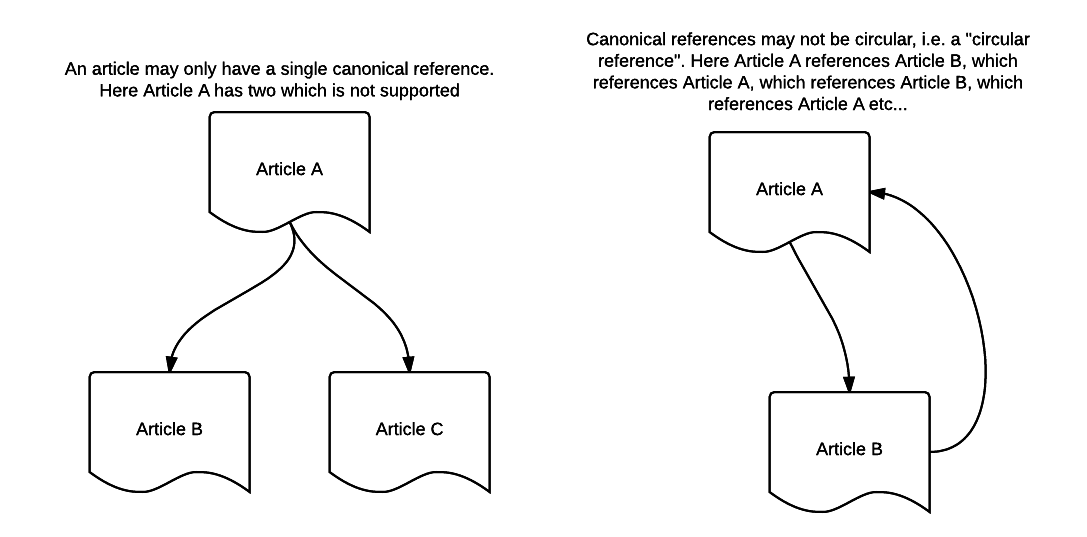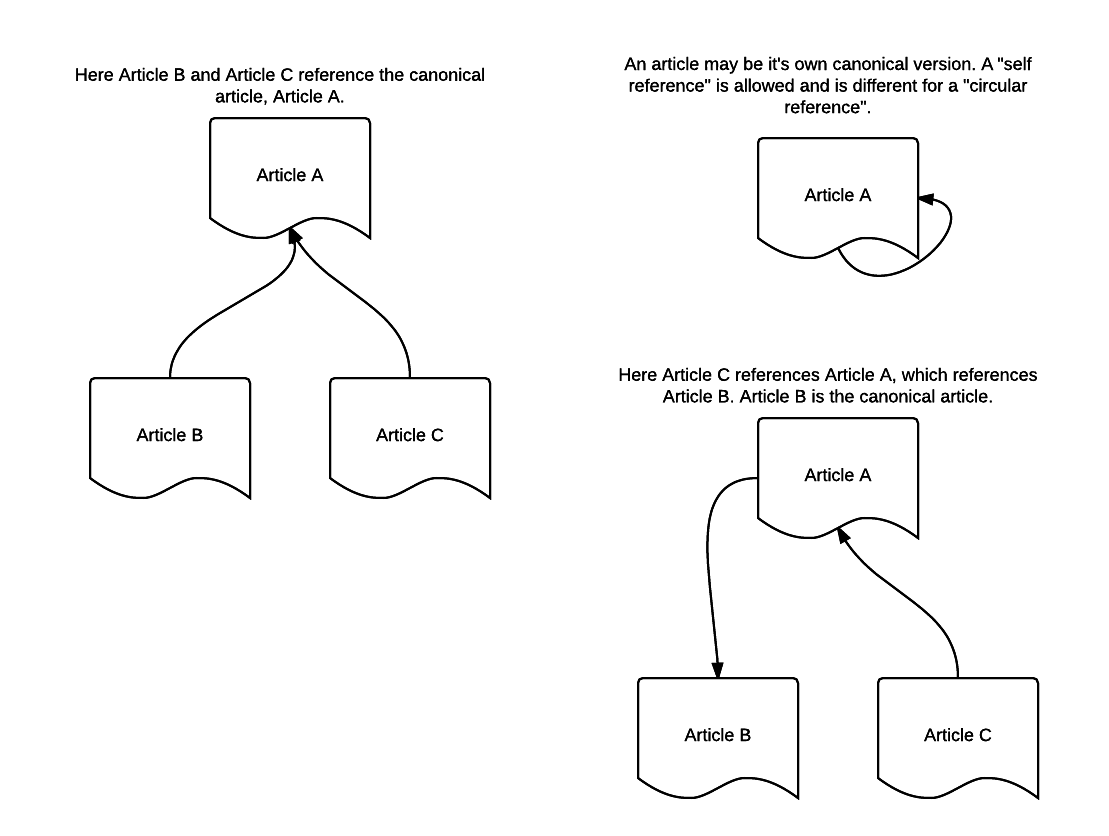Best Practice for Digital Publishing
The goal of this document is to describe the ideal way of delivering digital content online, and help you get the most out of Echobox. These best practices also greatly benefit the performance of your content on search engines, recommendation tools and social platforms.
Please note: If you are unable to accommodate all of these best practices, please discuss this with your Echobox customer representative to see how Echobox might be able to help mitigate any issues.
The following sections discuss various parts of digital content delivery, in order of priority, starting with the most important.
Semantic Tags
Various platforms use different semantic tag protocols to extract article meta content such as title, description, images etc. Echobox uses this information as part of its algorithms and to prepopulate previews, saving you a lot of time. The tags also ensure that people on social media who share your content to their friends and followers always use the best share information. Echobox requires that these protocols are implemented at the moment of publication. Please implement:
- Facebook: Open Graph Protocol - http://ogp.me/
- X/Twitter: Cards - https://developer.x.com/en/docs/x-for-websites/cards/overview/markup
- Google: Structured Data - http://schema.org/ (optional)
Media Content Feeds
The majority of your content is pulled by Echobox via media content feeds. Your feeds must be valid (i.e. conform to either the RSS, ATOM or XML sitemap standard) and contain articles as soon as they are publicly available on your website. Echobox checks each media content feed once per minute.
To ensure your feeds are valid, you can check them using the following tool: https://validator.w3.org/feed/. You will be unable to connect invalid feeds to Echobox.
For Echobox to always get articles as quickly as possible, please ensure the feeds you connect to Echobox do not use any caching.
In order for your new content to be processed more quickly, you can further reduce the size of your media content feeds to only include content published within the last few hours.
MEDIA TYPES
Echobox supports the following image formats: JPEG, JPG, PNG, JFIF, GIF, WEBP
Echobox supports the following video formats: MP4, MPG, AVI, MOV, WMV, WEBM, OGM, OGV, ASX, MPEG, M4V
Web Tag
The Web Tag allows Echobox to seamlessly integrate your traffic data into multiple optimization algorithms. All data collected is fully anonymized and GDPR compliant. As the Web Tag does not use cookies or collect personal data, it does not require visitor consent. To ensure the Web Tag does not slow down your website, it operates asynchronously and is heavily cached via our global CDN partners. When installing the Web Tag on your website(s), please ensure the following:
- The provided Web Tag snippet is added before the closing <head> tag on each page of your website and after any <link rel="canonical" href="https://..." /> elements are loaded.
- The Web Tag may be installed through a tag manager, e.g. Google Tag Manager. Due to some tag managers' caching or likelihood of being blocked on users' browsers, we recommend installing the Web Tag without a tag manager. If you are using a tag manager for the Web Tag, please email Echobox Support.
- The Web Tag is included as provided. Do not download the referenced source code and include it directly.
The Web Tag snippet can be found in your Echobox settings or during setup.
Properties, Pages and Domains
Echobox requires that one Property represents a single top-level domain (TLD). It is not possible to combine multiple TLDs into a single Property on Echobox. However, subdomains within a TLD can be in the same Property on Echobox.
Social pages can only be added into a single Property on Echobox Social if they post content mostly to the TLD of said Property. For instance, if 2 social pages post content to 2 separate TLDs, then each social page needs to be added to a separate Property on Echobox Social, with each Property linked to said TLD.
Mobile Experience
To provide a seamless experiences to mobile website visitors, all content should be made available from a single URL/domain using responsive design (https://en.wikipedia.org/wiki/Responsive_web_design).
The more classical technical implementation involves redirecting mobile visitors to a different page or domain, e.g. www.domain.com -> mobile.domain.com. Whilst not ideal, please ensure the following if you have such an implementation:
- The mobile version of the article must include an embedded canonical reference tag to the desktop version (https://support.google.com/webmasters/answer/139066?hl=en).
- The mobile version of the website must redirect non-mobile visitors back to the full desktop version. On social media, for instance, it ensures that any reshares made by visitors who land on the mobile version will display normally to viewers on a desktop.
URL Structure
Your URLs should contain all essential hierarchical information within the URL path.
To allow for enough flexibility when using automation, it is recommended that URL path folders reflect the underlying structure of your website's content. For instance, if your website has a section for "sports", the URL path for sports content should be domain.com/sports/article.html
URLs that use query parameters (?) require additional setup to work correctly. Please speak to your customer representative to set this up.
A common structure followed by publishers is as follows: https://moz.com/learn/seo/url
Each distinct article or other piece of content you publish must be made available on its own unique URL path and not change or redirect over time.
For more information about URL standards, please see here: https://www.ietf.org/rfc/rfc3986.txt
Republishing Articles & Duplicate Content
Republished content. Content is considered republished if the article reappears in a media feed with a newer publish time and the same URL.
Duplicate content. Content is considered duplicated if two versions of an article (possibly with the same or modified content) are published on different URLs.
It is important that when you wish to change the content of an article, for example, to modify the title, correct a grammatical error etc., that the URL of the article remain unchanged. This ensures that any traffic associated with the original content is easily associated with the updated content. If you duplicate your content (i.e. different URL) when making changes, it becomes more difficult to detect this relationship.
Content must not be duplicated on your website, i.e. published more than once on different URLs or domains. Duplicating content also has a significant negative impact on the engagement and visibility of the article on both search engines and social media.
Echobox can provide some support to help minimize the effect of duplicate content. For the best possible results, however, content must only ever be available via a single URL/domain.
In cases where duplicate content cannot be avoided, Echobox strongly recommends the correct implementation of canonical URL tags (https://support.google.com/webmasters/answer/139066?hl=en). A canonical reference is defined as:
- "A canonical link element is an HTML element that helps webmasters prevent duplicate content issues by specifying the "canonical" or "preferred" version of a web page as part of search engine optimization. It is described in RFC 6596, which went live in April 2012." - Wikipedia
Some common invalid implementations of canonical references are given in the following figures:

Examples of valid implementations of canonical references:

You can use the following tool to validate your configuration here: https://seositecheckup.com/tools/url-canonicalization-test
Browser Compatibility
Echobox supports the following desktop browsers, provided they have been updated to the most recent version available:
- Chrome (Recommended)
- Firefox
- Microsoft Edge
- Apple Safari
- Opera
Echobox supports the following mobile browsers, provided they have been updated to the most recent version available:
- Chrome (iOS and Android) (Recommended)
- Firefox (iOS and Android)
- Opera Mobile (iOS and Android)
- Safari (iOS)
- Samsung Internet
Website Performance
There is a direct link between website load times and visitor bounce rate, https://econsultancy.com/blog/10936-site-speed-case-studies-tips-and-tools-for-improving-your-conversion-rate/: "A one second delay in page-load can cause 7% loss in customer conversions."
Echobox strongly recommends that your articles can all be loaded in under 1 second. This not only ensures you keep visitors on your website as long as possible, but it also ensures that Echobox can react as quickly as possible to changes on your website. There are many free tools available online that help assess your website performance, such as:
HTTP(S) Redirects
When a URL is redirected to another URL, for example because an article has been republished elsewhere (see section 6) or because the URL is now being provided via https:// rather than http://, it is necessary to ensure all tracking parameters are preserved, i.e. utm_source, utm_campaign & utm_medium. If these tracking parameters are removed or altered it will severely inhibit Echobox from creating a valid optimization strategy.
Paywalls
If all or some of your content is located behind a paywall, please ensure Echobox's scrapers are allowed to access this content. For this, you may either whitelist our user agent or IP ranges, although we recommend whitelisting our user agent as our IP ranges change over time. Your Customer Success Manager will be able to share those with you.
Echobox Social: Facebook Domain Verification
Facebook introduced Domain Verification to fight against fake news. Only the owner of a domain can edit link posts from that domain. It's therefore important you ensure you've completed Facebook's Domain Verification before using Echobox Social. Full details can be found here: https://developers.facebook.com/docs/sharing/domain-verification#add-your-domain-in-business-manager. Please note that this is not the same as the blue Verified badge or Link Ownership.
Echobox Social: Share Messages & Autofeed
When using the Autofeed on Echobox Social, which automatically publishes your best content at optimal times, you need to select a "data source" for the share message. A data source can be your og:description (see http://ogp.me/), your RSS title or similar.
Whenever the Autofeed wants to share, it will pull the text from your chosen data source, and use it as the share message. It is crucial your chosen data source consists of social-ready share messages. If the quality of the share messages in your data source is below the quality of share messages you posted before using the Autofeed, your traffic will most likely decline. To benefit from the Autofeed's potential, you have to ensure your data source consists of high-quality share messages.
Useful Tools Appendix
Website Performance Summary: https://developers.google.com/speed/pagespeed/insights
Website Performance Summary: https://gtmetrix.com/
RSS Feed Validator: https://validator.w3.org/feed/
Facebook Object Debugger: https://developers.facebook.com/tools/debug/og/object/
Canonical Reference Validator: http://seositecheckup.com/tools/url-canonicalization-test
